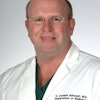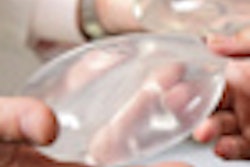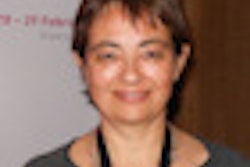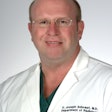
LONDON (Reuters) - In June 2000, when American medical regulators posted a warning letter on the Internet about problems at a breast-implant maker in southern France, French authorities didn't pay much attention.
A U.S. Food and Drug Administration (FDA) inspection had found some products manufactured by Poly Implant Prothese (PIP) were "adulterated," the letter said. French regulators say they can't be sure now if they even saw it on the FDA's website.
In the following decade, substandard silicone implants made by PIP were implanted into hundreds of thousands of unwitting women around the world. The French government in December advised 30,000 women to have their implants removed, warning the devices had an unusually high rupture rate and may contain industrial-grade silicone.
The lack of transatlantic communication is just one problem highlighted by the scandal. The affair is rooted in an alleged fraud, in which PIP is suspected of duping inspectors and flouting safety rules.
But some doctors, regulators, and even the medical devices industry itself say the affair also exposes Europe's weak regulation system -- one that allowed PIP to operate for longer than it could have under a more rigorous regime.
They point to an ad hoc system of product approval and a lack of vigilance once a device is on the market. And they say the process is so byzantine, no organization is truly taking responsibility for keeping the public safe.
"Unsafe at any speed -- that's one description I'd use for medical device regulation in Europe," said Nick Freemantle of University College London, who has published studies on the way medical devices get to market.
Trish Groves, deputy editor of the British Medical Journal says there's "definitely a risk other poor products will get through, because the system is so very weak."
French health authorities acknowledged as much in a 175-page report on February 1. "Radical change" is needed in Europe to assure proper surveillance of medical devices, said the health department's general director Jean-Yves Grall.
FDA acted sooner
The FDA got onto PIP when the company sought approval to sell saline implants in the United States in 2000. The FDA rejected the application. Its warning letter cited PIP's failure to investigate deflation problems with the implants, as well as a failure to report more than 120 complaints about them from customers in France and elsewhere.
"Given the serious nature of these violations ... all devices manufactured by PIP ... may be detained without physical examination upon entry to the United States until these violations are corrected," said the letter, dated June 22, 2000.
The FDA believes its rigorous standards stopped U.S. patients from being exposed to the PIP implants, said William Maisel, deputy director and chief scientist for devices.
In the European Union, where more than 500,000 medical devices are sold, from dentures and wheelchairs to pacemakers and implants for breasts, buttocks, and testicles, the system is both less thorough and more complex than the U.S. regime.
Medical devices are regulated under the Conformite Europeenne, or "CE mark," system -- sometimes known as the "kite mark" for its distinctive shape. The CE mark is also used for household gadgets like electric toasters or coffee machines and for children's toys and mobile phones.
Getting a CE mark is tougher for devices like pacemakers or implants than for toys or toasters. But the badge of approval can still be gained with relatively few tests -- certainly less scrutiny than the extensive clinical trials required for pharmaceuticals.
'Chalk and cheese'
The EU and U.S. systems are as different as "chalk and cheese," said Freemantle. In the United States, medical devices are tested by serious regulatory scientists at the FDA, in a process that resembles a new drug submission. Europe's system, he said, is "more like an old-boy network."
Because Europe has no centralized process for approving medical devices, manufacturers don't go directly to a national or Europe-wide regulator. Instead, they seek a CE mark through any one of around 70 to 80 organizations known as Notified Bodies, which largely are private companies.
The Notified Bodies are scattered across all 27 EU member states and range from large companies to small firms with just one or two employees. All are authorized to give a stamp of approval to a new product. They are tasked with checking the product does what it's supposed to, has been tested in a lab, or is similar to other devices on the market. And Notified Bodies can suggest to manufacturers that they contract out testing to small laboratories, who may themselves be authorized by a separate agency.
Scientists who published a review of the system in the European Heart Journal in May 2011 found that the fragmentary setup encourages manufacturers to shop around for countries or Notified Bodies most likely to offer hassle-free certification.
A 2010 survey of medical device manufacturers by researchers at Stanford University found that high-risk devices took an average of 54 months to get through the FDA to market, but just 11 months in Europe.
The medical technology industry says it recognizes Europe's system is flawed.
John Brennan, director of regulatory and technical affairs at industry trade body Eucomed, which represents some 22,500 medical technology companies in Europe, said the system is constrained by "an excessive level of confidentiality, a lack of effective central coordination, and the perceived lack of clinical data and involvement of authorities."
The European Commission, which oversees the laws governing devices regulation, said the Notified Bodies' quality looks uneven. It began working on new proposals to tighten the system long before the PIP scandal erupted, it said.
"The present legislation gives too great a margin of maneuver to organizations that certify medical devices," said the Commission's Director General for Health and Consumers, Paola Testori Coggi. The system is "imperfect" and has "a lot of space to improve."
'Smokescreen'
Once the Notified Body's initial job is done and a product is on the market, it's up to national regulators to keep a look out for problems and ensure the Notified Body is keeping tabs.
In the PIP case, that national regulator was the Agence Francaise de Securite Sanitaire des Produits de Sante (AFSSAPS), which has the power to take a medical device off the market. The Notified Body that gave PIP authorization to trade was a private German firm called TUV Rheinland.
AFSSAPS -- already set for an overhaul following a scandal over diet pills which France withdrew in 2009 after they were blamed for at least 500 deaths -- told Reuters that responsibility for checking medical devices like breast implants lies with the manufacturer.
It said the regulatory focus should be on TUV, whose inspectors would visit PIP's headquarters once a year, assess standards, review paperwork, and then report back to the company and German authorities in case of problems.
TUV said the implants themselves were tested by two French laboratories, which were in turn authorized by another French agency called COFRAC. Both labs confirmed they had tested PIP's implants. One said its tests were only mechanical, such as rupture tests; the other said it had tested the implants' contents for toxicity, but would not give details.
COFRAC, a government-funded nonprofit body, said it was not responsible for the output of a lab and could not guarantee test results. COFRAC does not answer to AFSSAPS, but is audited internally and by peer review.
For its part, TUV was only responsible for auditing PIP's manufacturing process, said spokesman Hartmut Mueller-Gerbes. TUV relied on PIP to disclose any operational alterations, such as a change in the kind of silicone it was using. If PIP said nothing, TUV would assume everything was unchanged. Audits were based on the assumption that a firm is responsible and liable, and would have too much to lose to cut corners, TUV said.
Germany's Zentralstelle der Laender fuer Gesundheitsschutz bei Arzneimitteln und Medizinprodukten, or ZLG, monitors TUV. It said inspections are announced a few weeks in advance, as stipulated in EU rules, and a wide range of documents are checked once a year.
PIP's founder, Jean-Claude Mas, testified to police that PIP hid a paper trail documenting large purchases of nonauthorized raw materials which may have aroused TUV's suspicions.
It all adds up to what Richard Horton, editor of the Lancet medical journal, calls a "smokescreen of device regulation which is putting patients at risk." The whole system is "based on the idea that you wait until something goes wrong before you take any serious action."
'Stress test'
It isn't clear how AFSSAPS missed the warning from American regulators. AFSSAPS said it can't be sure whether someone saw the letter. It watches the FDA's site, but not systematically.
Jean-Claude Ghislain, its director of evaluation for medical devices, said AFSSAPS had not been informed by the FDA of its concerns over PIP in a "proactive" way. "We cannot check at every moment other countries' health-authority websites."
The FDA suggests the French could have been more attentive. "We don't as a routine provide publically available information to other regulators, because it's easier and more efficient for them to use the public website," said the FDA's Maisel.
His boss, FDA Commissioner Margaret Hamburg, said regulators on both sides of the Atlantic should see it as an opportunity to "look at our systems and see how we can strengthen them."
The European Commission says it wants to reinforce rules and improve cooperation. It has written to French and German authorities, spokesman Frederic Vincent said, so they can explain "who did what and when." When it gets the answers it needs, the Commission will conduct a "stress test" on the case to see what lessons can be learned.
Until the system is improved, "we're sitting on a time bomb which could explode at any moment," says the Lancet's Horton. "No government anywhere in the EU can be sure that medical devices in their country are safe and effective."
By Kate Kelland
Last Updated: 2012-02-03 11:26:16 -0400 (Reuters Health)
Copyright © 2012 Reuters Limited. All rights reserved. Republication or redistribution of Reuters content, including by framing or similar means, is expressly prohibited without the prior written consent of Reuters. Reuters shall not be liable for any errors or delays in the content, or for any actions taken in reliance thereon. Reuters and the Reuters sphere logo are registered trademarks and trademarks of the Reuters group of companies around the world.


















